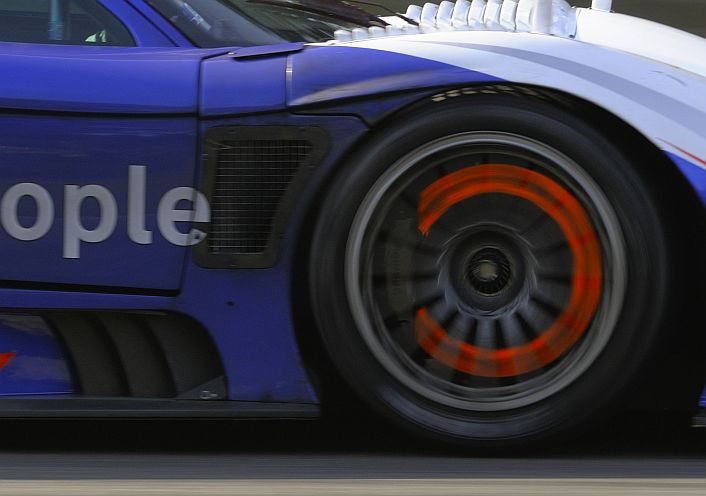| |
| Bild-Source: iStock-Foto |
| |
| Do our cars brake with lightweight constructions soon? While today’s brake disks are produced from heavy, heat-resistant cast iron, the disks of the future could be made of light aluminum. This would save weight and thus fuel while improving the vehicle’s handling as the unsprung masses in the chassis would be smaller. |
| |
| However, aluminum is soft, which makes it unsuitable for powerful brake calipers. A ceramic layer is therefore required to protect the aluminum brake disks, which perform the friction work and channel off the generated heat. Empa is developing this crucial component, upon which the project can founder or set trends. |
| |
| While ceramic brakes are nothing new, having long been used in sports and racing cars, they are expensive. For the Porsche 911, for instance, ceramic carbon brakes will add a whopping 12,000 Swiss francs to the price – almost the cost of a complete Fiat 500! Therefore, the technology hardly seems suitable for use in budget cars. |
| |
Several technical hurdles at once
Empa is to develop a novel brake disk for mass-produced small cars under the direction of the Politecnico di Torino and in conjunction with Spanish brake manufacturer Fagor Ederlan, Liechtenstein soldering specialists Listemann AG and the Fiat research center C.R.F. The Swiss and Liechtenstein portion of the research project is funded by the Swiss Commission for Technology and Innovation (CTI). A prototype of the brake should be up and running by April of next year. The task is not quite easy: The brake needs to be produced quickly and in large quantities, be affordable and last at least as long as its existing cast-iron counterparts. For ceramics specialist Jakob Kübler, this means clearing several technical hurdles in one fell swoop. “First of all, we had to find a low-priced ceramic material that is a good heat conductor and can also be processed easily,” he explains. This rules out zirconium oxide as it insulates too strongly. And silicon carbide conducts heat well but breaks too easily, which leaves only one material: aluminum oxide. The material is in many ceramic components, from faucets to hip joints, and can be obtained inexpensively. |
| |
| Kübler and his team used it to design a ceramic laminate – a ceramic plate that is around two millimeters thick and comprises up to 15 individual layers: silicon carbide is added to the aluminum oxide layers to increase the heat conductivity, along with a cover to regulate wear and tear, and an adherent layer to enable the ceramics to be soldered to the aluminum surface. Every layer is blended with water to make a sludge, which is then applied to a synthetic film. Finally, the layers are compressed, the synthetic material in-between burned out and the different layers joined and condensed at several hundred degrees. The electron microscope then reveals just how well the vertical interconnection process has worked. |
| |
| The consortium decided to make small tiles, which are soldered to the brake disk side by side like bathroom tiles. The reason: when exposed to heat, aluminum expands three to four times more than ceramics. A single-piece ceramic brake pad would thus fall off the aluminum carrier due to stress cracks. However, the soldering process is also easier said than done with small tiles: as aluminum melts at roughly 700 degrees, the soldering has to be carried out at lower temperatures. Nonetheless, the solder mustn’t go soft during an emergency stop; otherwise, the tiles will fall off just when they are needed most. |
| |
| Therefore, a single ceramic mix is not enough. Kübler and his team keep having to check the feedback from the soldering specialists from Torino, optimize the mixture of ceramics further and provide new samples. And not only that; he already has to factor in the costs during the design phase: expensive techniques, say, in a vacuum or under shielding gas, have to be avoided as they would be unsuitable for mass production. |
| |
| In the meantime, Listemann AG in Vaduz is developing the special joining technology to solder the tiles that is suitable for industry. The brake manufacturer Fagor Ederlan is designing the brake system out of aluminum and the necessary dimensions of the brake disk. The culmination of the project will be a prototype, which can then be put through its paces at brake testing rigs and subsequently incorporated into a test vehicle. If it passes, it will be used to develop a serial component over the next few years, which will give European cars a head start on the global market. |
| |
|
| |
|
|
| |
|
Images can be downloaded here.
|
| |
| |


